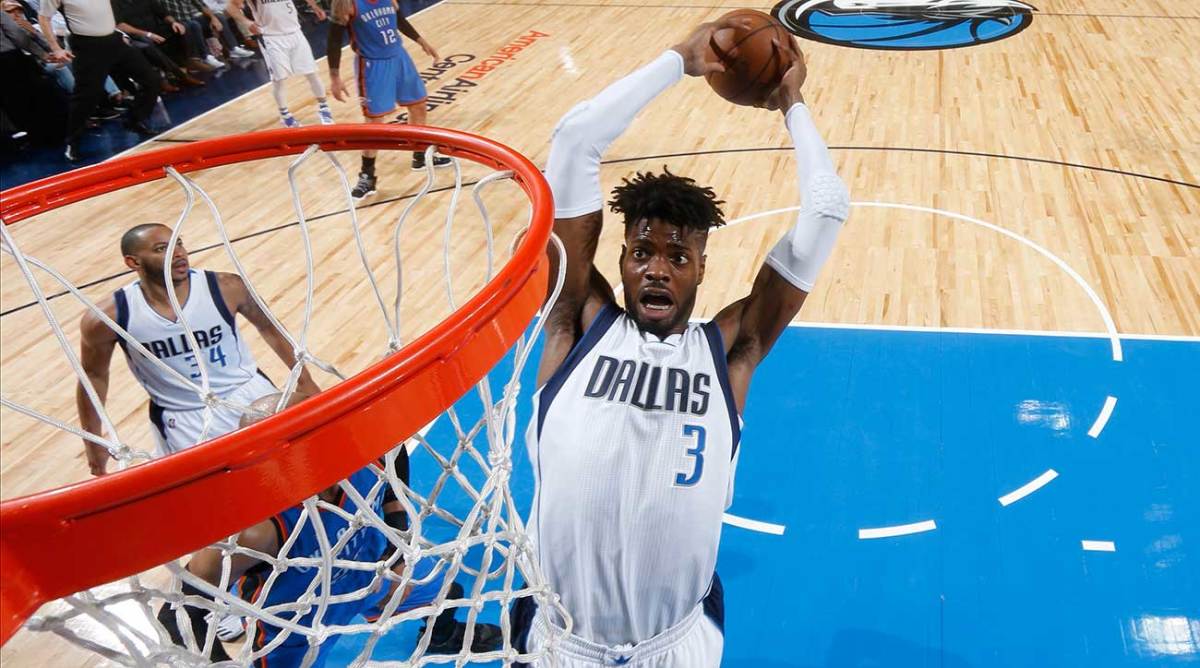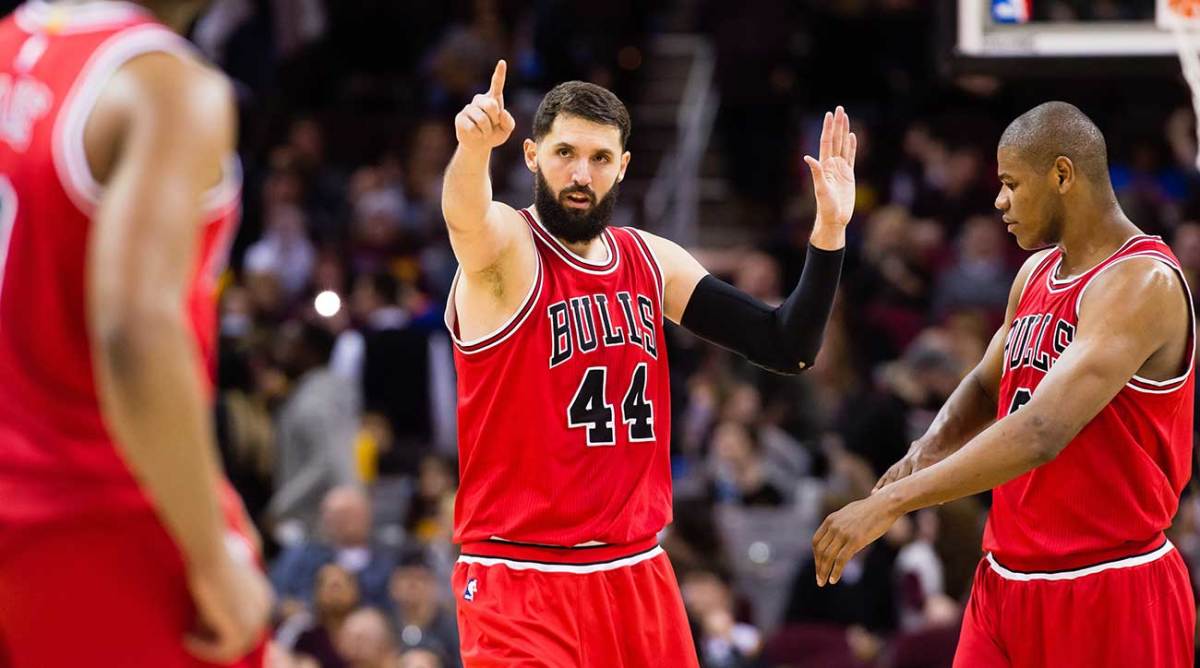2017 NBA Free Agency: What's Left To Sort Out?

The whirlwind of free agency has come and gone. It is less than a month old, but things in the NBA move quickly; meetings begin and agreements are struck within minutes of the period's commencement, setting off a chain reaction of teams moving further down their lists of preferred targets. Once one player signs, the next in line must be pursued with even greater urgency.
Gordon Hayward took his time by modern NBA standards. His decision was made by July 4th, three days after free agency officially began. Within a the most pressing business had been squared away: Hayward, Stephen Curry, Kevin Durant, Blake Griffin, Paul Millsap, Danilo Gallinari, Serge Ibaka, Jrue Holiday, and Andre Iguodala all committed, along with dozens more.
All that was left to settle was the fate of a select group of stragglers. Now even Otto Porter and Kentavious Caldwell-Pope are spoken for, shifting free agency into its lingering final stage. To parse out what league business is left, let's wade into some of the questions still in the air as the craziest portion of the NBA calendar winds down.

Why hasn’t Nerlens Noel signed a contract yet?
To hear his agent tell it, Noel just hasn’t received an offer anywhere near his liking from the Mavericks. "We're very disappointed with where things stand," Happy Walters told the Dallas Morning News. "Nerlens loves Dallas and spent June there working out, but we're still waiting on a serious offer."
Noel is in a tricky position. For as much as Dallas likes Noel, it doesn’t have much incentive to bowl him over with a hefty contract. What might have once seemed an open market for Noel’s services was artificially curbed by restricted free agency; any formal offers sheet agreed to between Noel and another club could be matched in full by the Mavericks, all while creating some logistical inconvenience for the team that tried to sign him away. Beyond that, the pool of sensible fits for Noel’s services thins further as more teams use up their remaining cap space and particularly when they commit to other starting centers. Striking a favorable deal requires leverage. Noel has little.
Such is the intended purpose of restricted free agency, a mechanism intended to allow teams to keep young players after their rookie deals expired. Dallas didn’t draft Noel, but they traded for him at the deadline specifically because of the advantage it gave them in free agency. Once Noel cleared the initial rounds of high-value signings, the Mavericks were positioned to play the long game in his negotiations—not unlike what the Suns did with Eric Bledsoe back in 2014. Those two parties didn’t strike a deal until late September.
The Crossover's All-NBA Summer League Teams
Are any other players stuck in a similar position?
A few: JaMychal Green, Mason Plumlee, and Nikola Mirotic. Alex Len is also a restricted free agent, though his lower market value could allow him to pursue offer sheets from a wider variety of teams.
All three of these players are short on options. There’s a reason why Green’s agent has tried to pressure the Grizzlies publicly by paying lip service to the sign-and-trade market; there are so few cap space teams left that any urgency would have to come from a more creative solution. Green has fans in other front offices, but none that are in a position to make him the kind of offer they could be sure the Grizzlies wouldn’t match. He’s also old enough, at 27, to age him out of fit for longer-term rebuilds.
Plumlee is bumping up against many of the same systemic factors as Noel while also knowing that any possibility of starting in Denver is all but gone. Paul Millsap and Nikola Jokic will hold down those frontcourt spots moving forward. There’s room for Plumlee to fill the space in the rotation between them, though with that kind of role adjustment typically comes with a steep paycut.
Oddly enough, Mirotic—whose position with the Bulls has for so long seemed unstable—might have the most leverage of the three. Chicago doesn’t have many better immediate options. That in itself could embolden Mirotic to push for a bigger deal than his play would otherwise command, adding some tension to an otherwise stale negotiating period. The option to simply decline to pay Mirotic tens of millions of dollars is always on the table, though that kind of hard pass seems unlikely for a Bulls team that could use another tradeable piece.
Any of these three could also wind up taking the qualifying offer—a one-year tender from their previous teams that would allow them to re-enter free agency unrestricted next summer. The financial risk involved makes the qualifying offer an NBA rarity, but these are exceptional times. Overspending last summer coupled with larger league trends have fundamentally changed the market.
So what teams still have cap space available?
Practically speaking, Chicago, Phoenix, Brooklyn, Dallas, and Philadelphia all either have enough room under the cap to offer a contract starting at eight figures or could get there by relinquishing various cap holds. A potential sign-and-trade would open up the field a bit, though Noel’s restricted free agency leaves the Mavs with little reason to play ball on that kind of arrangement.
But let’s take Noel’s case, for example. Dallas is the team angling to re-sign him at a discount. Philadelphia, which traded Noel away at the deadline, runs heavy with centers as it is. Chicago could technically get into the mix if it liked, but doing so would require them to rescind their qualifying offer to Mirotic, removing the restriction on his free agency. No matter how Mirotic’s negotiations with the Bulls go from this point, the prospect of waiving their right to match on a Mirotic offer sheet—all for the purpose of making an ill-fated offer to Noel that the Mavericks themselves would then match—seems unreasonable. That leaves Phoenix and Brooklyn as the most realistic parties to play off of Dallas in free agency. Suffice to say if those teams had real interest in Noel and considered him to be gettable, an offer would already have been made.

Wouldn’t those teams want to use up as much of their cap space as possible?
Not necessarily. Part of the reason why many of this summer’s deals were on the more conservative side is that so many franchises splurged after last summer’s salary cap spice. A dramatic increase in league revenue brought on by a new broadcasting deal left almost every team in the league with max-level cap room. Rather than play out the string with that space, eager spenders committed rich, multi-year deals to even middling talents in anticipation that another, smaller cap jump this year would ease some of the financial pressure. That jump turned out to be much smaller than expected—reinforcing that every dollar spent comes at consequence.
It also serves a team to have a payroll under the cap line for the purpose of facilitating trades. Salary-matching rules don’t apply when a team can comfortably fit an incoming player’s contract into their cap room—as might help the Sixers mid-season as they look to strengthen their playoff candidacy. The likely lottery teams of this group (Chicago, Phoenix, Brooklyn) can also “rent” their room to acquire picks and young players. Why spend money on a fill-in veteran when a team can put their cap space to work? The Hawks just took on Jamal Crawford’s contract, which was bought out shortly thereafter, as part of a three-way deal with the Clippers and Nuggets. The payoff was a first-round pick and a closer look at center prospect Diamond Stone. That doesn’t reshape Atlanta’s plans in any meaningful way, but it gives a rebooting team a little bit more to work with.
Which other players are still available?
The most notable, by either game or reputation: Pau Gasol (who is all but sealed to return to the Spurs), Derrick Rose, Monta Ellis (just released by the Pacers), Andrew Bogut, Ian Clark, Shabazz Muhammad (whose qualifying offer was rescinded earlier this summer), JaVale McGee, Deron Williams, Marreese Speights, and Tony Allen.
Five Burning NBA Questions Yet To Be Answered
Wait, Derrick Rose?!
Yeah, I wouldn’t get too excited. Rose is less than a year removed from saying horrifying things while standing accused of rape. (Rose was found not liable in a civil suit.) Any word paid to Rose being a person of character or an asset to the broader culture of a franchise will be left gutted by the comments of the man himself under oath.
As far as the state of his game, Rose is coming off what was both his most productive post-injury season and a discouraging showcase of his place in the league. Rose isn’t equipped to be a lead creator in his current form but lacks the support game to do much else. Cutting doesn’t come naturally to him. Rose’s long-range shooting (21.7% last season) is as unreliable as ever. He is a persistent defensive liability in a league that asks point guards to hold down pick-and-rolls and chase shooters all over the floor. His profile aligns more as a backup than as a trustworthy starter, and yet Rose still carries himself as if he were an unimpeachable superstar. Milwaukee Bucks: Proceed at your own risk.
